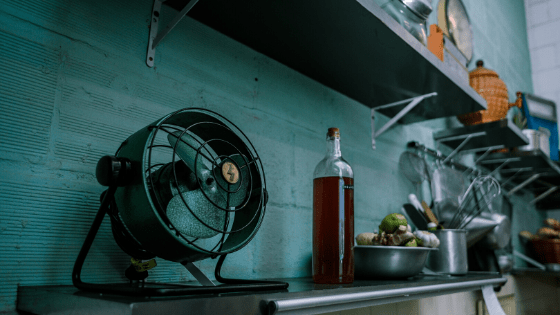The ghost kitchen, or cloud kitchen, depending on your preference, seems like a business idea suited the moment. Yet recent developments suggest an uncertain future for an idea designed to support a dining world dominated by home delivery.
For example, Uber Eats has bailed on a two-year experiment to lease ghost kitchen space to Paris restaurants to prepare food for its delivery service in that city. According to PYMNTS.com, the initiative was shut down as part of a cost-cutting move.
And Uber co-founder Travis Kalanick has stumbled out of the gate with his high-profile CloudKitchens startup. More on that later.
What’s a Ghost Kitchen Again?
In case you’re new to the concept, ghost kitchens are food preparation facilities dedicated to home delivery apps. They are kitchens without a restaurant, not accessible to the public. They are often located in an industrial park rather than on a commercial street.
Some major tech players and investors have made bets in the ghost kitchen space. These came before the pandemic when growth in the food delivery aggregator space pointed to a need for a new business model for food preparation. Why not use real estate more efficiently and create dedicated cloud kitchens in less expensive locations to feed the home delivery beast?
Last year, my colleague Mike Boland wrote a three-part series on Amazon’s experimentation with ghost kitchens, a signal that the world’s smartest company saw ghost kitchens as a key component of the future of dining.
Amazon’s signal came in the form of a $575 million investment in UK ghost kitchen player Deliveroo. That deal, while a minority investment, has come under regulatory scrutiny in the UK. A decision awaits.
A Concept for Our Time?
During lockdowns, restaurants were forced to rely on delivery and curbside pickup to survive. And post lockdown, restaurants are re-opening at very limited capacity, with many cities requiring social distancing, which limits seating capacity.
And, of course, restaurant margins are notoriously thin. So the economics of operating at limited capacity are shaky at best.
Cloud kitchens per se were not a panacea for restaurants during the crisis. After all, most restaurants had existing facilities and staff that they needed to utilize. And the cloud kitchen industry was not far enough along in its development to play a meaningful role during the lockdowns that spread across the world in March.
However, it seems logical that the crisis would lead many restaurant owners, particularly those with multiple locations, to rethink their business models. The ghost kitchen option could enable restauranteurs to reduce their physical footprint, and associated costs, without sacrificing revenue.
Looking at a long road ahead to full recovery for sit-down restaurants, it’s not hard to see cloud kitchens as part of a pivot strategy for restaurant owners.
Not So Fast
What happened, in the short term at least, is that the spate of delivery-only startups anticipated to create demand for businesses like Kalanick’s CloudKitchens hasn’t materialized. And in this regard, the pandemic has made things worse for the fledgling ghost kitchen industry.
Kalanick’s venture has also faced some early stumbles that hampered its ability to exploit a Covid-related delivery boom.
Fundamentally, it’s unclear if there is a looming groundswell of food entrepreneurs dreaming of launching virtual restaurants.
Ghost kitchens present an economic rationale for a new way to launch a restaurant. The model offers lower upfront costs to get into the business of serving people amazing food.
One thing missing from the concept is an emotional rationale. And in dining, that’s a major flaw.
Chefs and others who open restaurants are in it for a long list of reasons. Money is rarely number one. Often it’s not even on the list. Everyone knows there are better ways to make money.
Less There Than Meets the Eye?
It seems even the economic rationale cited above is not quite as good as advertised.
In May, Celebrity chef Eric Greenspan cut ties with Kalanick and CloudKitchens. The startup had until recently featured Greenspan prominently in its marketing. As in this poster which used to appear on the CloudKitchens website.

Now, Greenspan is singing a different tune. In this quote from Thinknum.com, he questions the whole ghost kitchens rationale.
“The cost to entry isn’t as low as it seems. Sure, the up-front costs can be lower because there’s no physical storefront, but that’s also the main problem in the end.
“If you have no storefront, you have no relationship with the customer. They don’t know the difference between you and anyone else on an app. You need a sign on the road. With CloudKitchens, you’re just a digital brand, and you’re competing with thousands of other restaurants in a digital marketplace without the benefit of a storefront, a real location, or Instagram shots of your food in your location. So, in the end, if you are going to make things work with a virtual restaurant, you end up spending just as much, if not more, on digital marketing as you would on a lease and front-of-house staff.”
Of course, for businesses with an established brand — think of any chain restaurant — the rationale for cloud kitchens may be stronger. Conceivably they can serve the same or larger customer radius with fewer physical restaurants using cloud kitchens to fulfill delivery orders. Yet if delivery aggregators fulfill the orders, they contend with the same brand dilution risk. They also face the loss of a direct customer connection. These challenges with aggregators are not the direct fault of ghost kitchens. But they are part of the rationale for resisting the trend.
Still a Future in Virtual Dining?
Despite these challenges, there may well be a future for ghost kitchens.
First of all, we shouldn’t underestimate the man who built Uber. Kalanick is determined to succeed. And remember Amazon invested half a billion in this space.
Finally, again, don’t forget that restaurants may be looking at months, or possibly years, of pandemic-induced limits on dine-in capacity. Also, consumer habits have been forced to change. And some of the changes may be permanent.
We expect multi-location businesses, in particular, to consider ghost kitchens as a way to prop up their businesses during a long recovery. Perhaps this happens in concert with a culling of weaker dine-in locations.






One Response